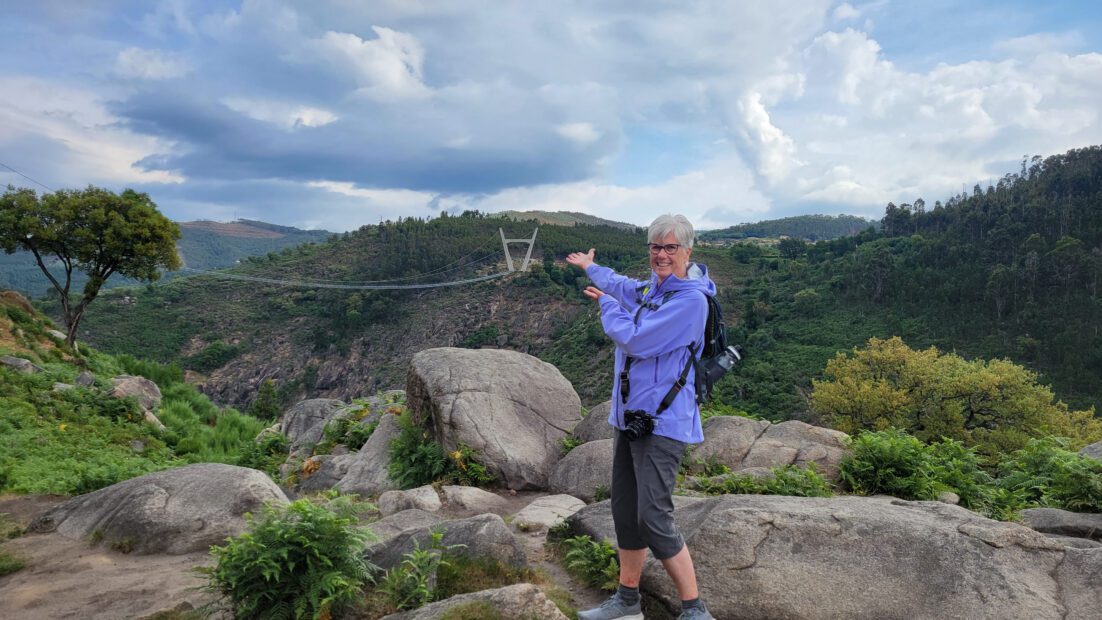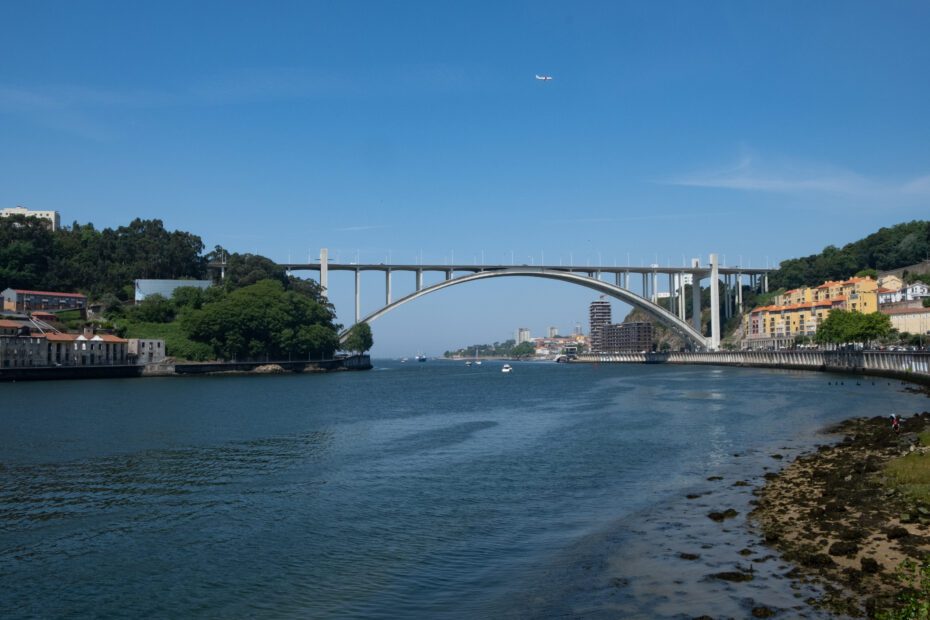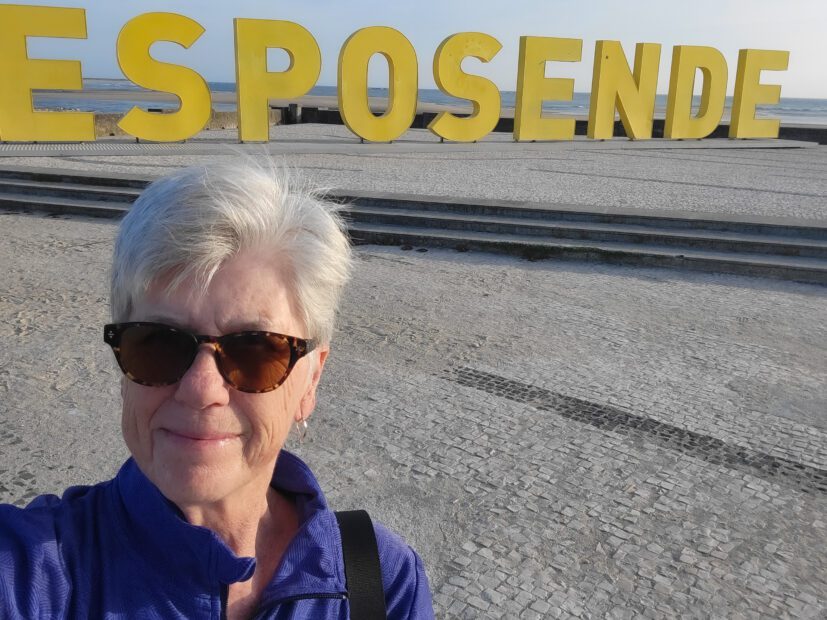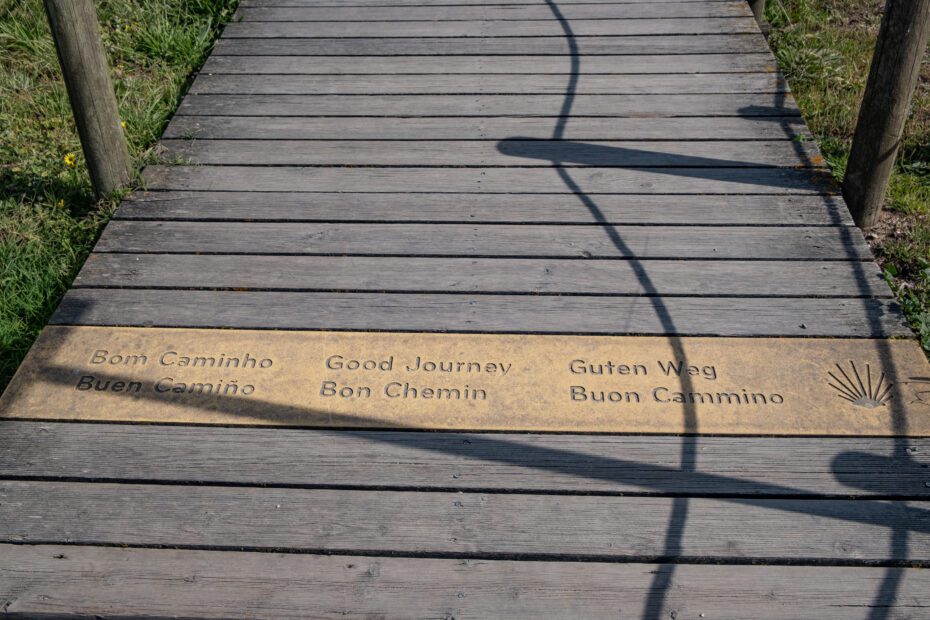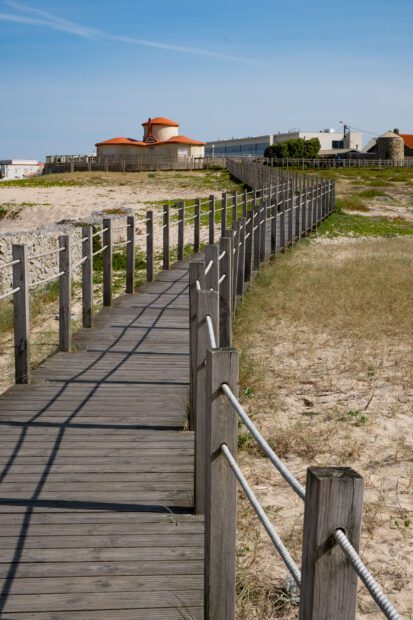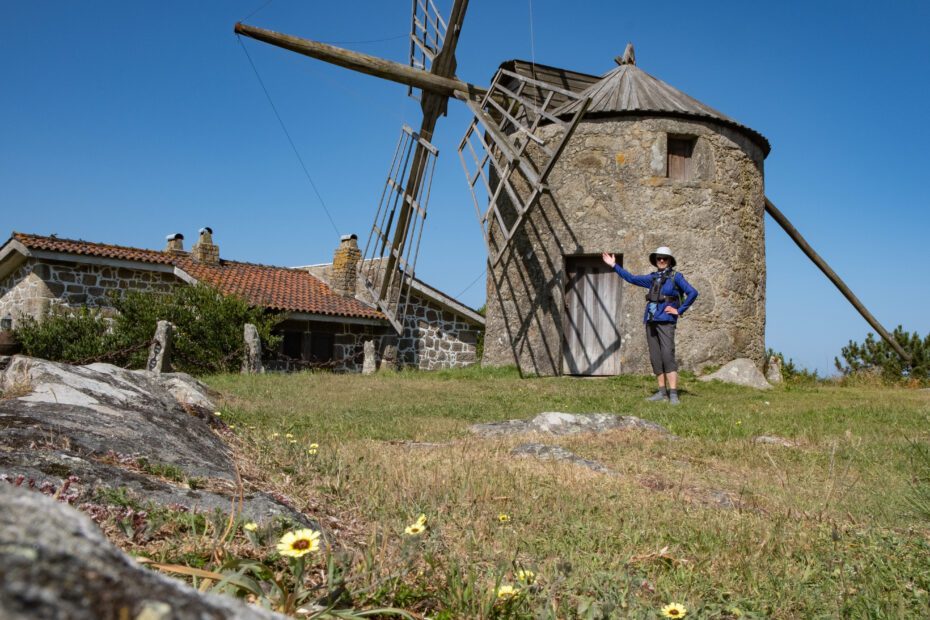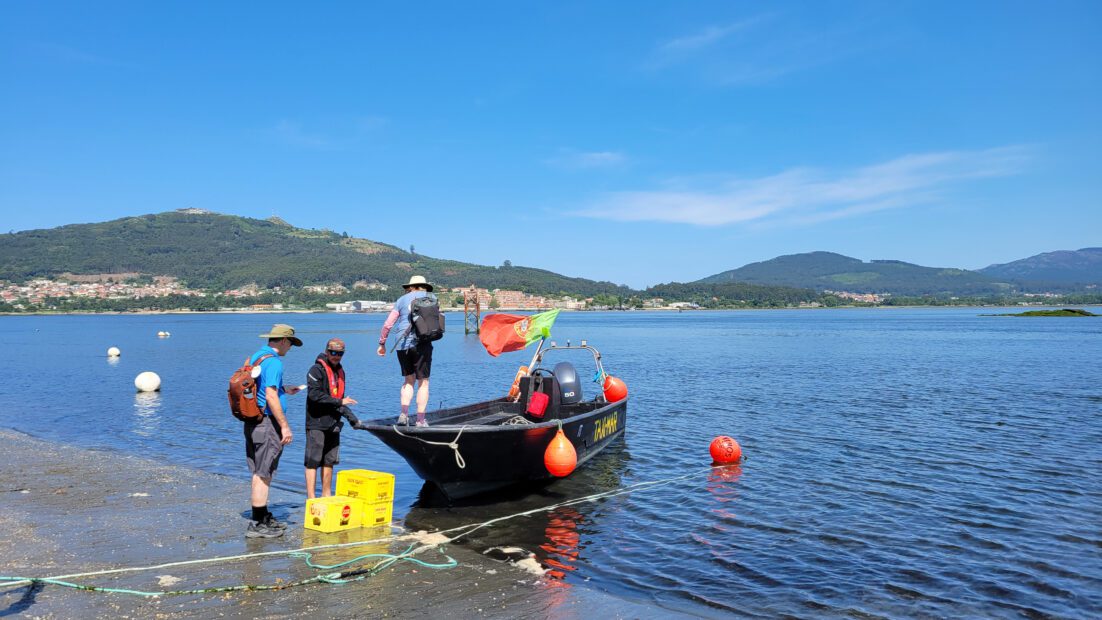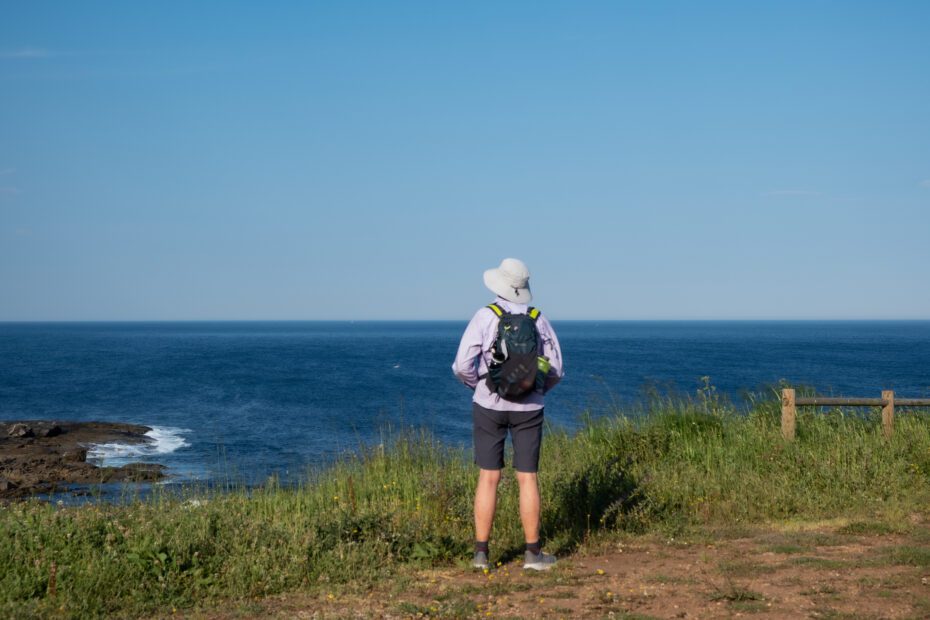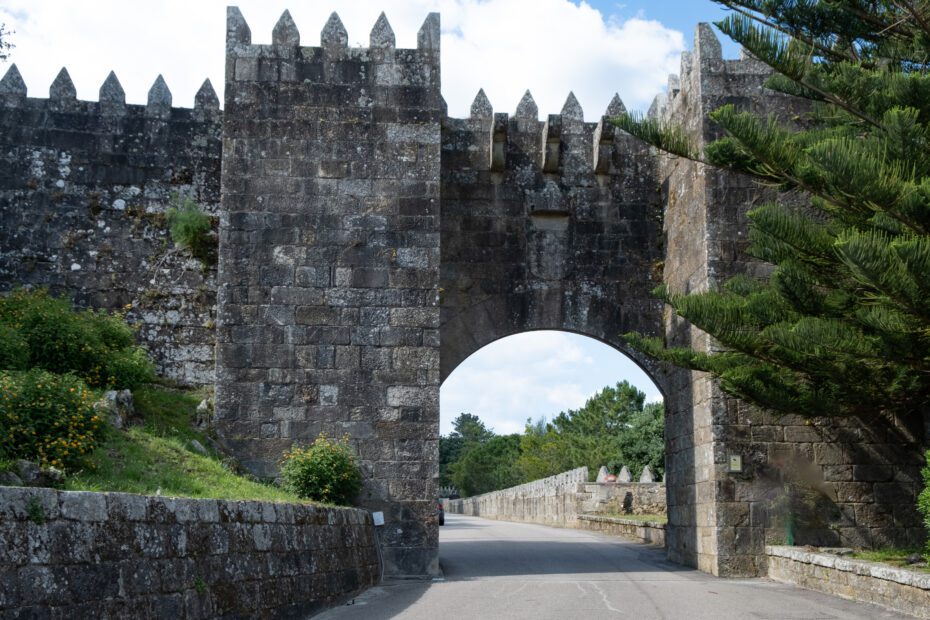While planning my trip to Portugal at the beginning of this year, I started looking at day trips from Porto, knowing that I would be spending several days in the area. This trip caught my attention. When we visited Portugal in 2019 we connected with a guide (through a colleague at UBC). Joao had posted on his blog that he had visited here so I asked him how it was. He said, “Fantastic, you have to do it!”. So I booked the full-day tour for May 26th.
From my hotel, I walked to the meeting point leaving time to have coffee and some breakfast at what turned out to be one of my favourite cafes, Pastelaria Tupi. Lots of locals here! Then down the street to look for our guide, Ricardo from Ennetours and his white van. Once all 8 travelers arrived, off we went, crossing the Ponte de Feixo bridge over the Douro River and heading south-east for about 1 hour. We stopped in the town of Arouca for a coffee before completing the last part of the drive along a narrow winding road to get to the trailhead at Areinha for the start of the Paiva Walkways and access to the Suspension Bridge.


We saw a herd of goats when Ricardo parked the car and we had a short walk to the Auroca 516 Suspension Bridge where we could see the bridge in all its splendor. After a few photos, we walked to the entrance.
A little bit about the bridge. It was built in 2020 by a group of mountain climbers and highly skilled engineers. It’s the 2nd longest pedestrian suspension bridge in the world (the longest is in Nepal) and is 516 meters long (as indicated in the name) suspended 175 meters above the Paiva River . It is a fascinating story of construction. Here’s a link to learn more: Ponte 516 Arouca: Site Oficial Ponte Suspensa
Now back to the crossing…I do have some issues with vertigo and I was feeling a little anxious. And, at the bridge, Ricardo let us know that we would need to walk to the other side…and back again! That’s over a kilometer of bridge walking!




A young Moroccan woman, Ines, who was in our group was feeling anxious as well. We agreed to support each other during the bridge walk. The number of people on the bridge is limited, but you do pass another group coming the other way. And there are strict rules – no running or bouncing, and no sitting down (they take that as a sign you are in distress).
Ines and I started together. The bottom of the walkway is grated, so you can see through it. I focused on looking ahead and after a while, I relaxed. This bridge is very well constructed. I started feeling a little giddy…truly enjoying the experience. Ines and I traded phones to take photos of each other.




On the other side, Ines wandered off to a spot well away from the others. I found out later that she asked the park rangers if she could have a cigarette to calm her nerves! After about 15 minutes we started back to the other side. I was much more confident now and took in the amazing views of the Paiva River and the wooden walkway that we would soon be walking on. What a great experience! Definitely a highlight of my time in Portugal.
Once back on the other side, we were able to start the Paiva Walkway. Both the walkway and the suspension bridge are located in the Arouca Geopark, a UNESCO Geological site. The boardwalk and path hugs the Paiva River between Areinha and Espiunca. There are over 400 stairs on the boardwalk. Because we started at Areinha, we walked downstream and down the stairs (not up)…thankfully!



Ines and I walked together. I learned that she is studying law in Paris and after this trip she will be going to China for two months before returning to school. We had a great conversations.





About halfway through the 8 km walk, we encountered another suspension bridge. This one was bouncier, but very short and not very high. No problem getting across and back for that one! At this point, we had the choice to keep walking, or have Ricardo drive us to the end where we would meet the others. We selected walking. He did tell us that we would have to pick up the pace, as some of the others had passed through about 20 minutes before us.




The views continued to amaze. There were a few beaches along the river, where people could swim. It wasn’t too busy on the path and we didn’t see anyone picnicing or swimming. We knew we were on a tight time line, so we marched on…taking photos along the way.






When we arrived at the end of the trail, everyone was there, and we had made up about 15 minutes of time, so the other walkers only waited about 5 minutes for us. Everyone was amazed that we go there so quickly!

Back into the van for a 20 minute drive back to Arouca for lunch. We dined Asquinha da Quinta and enjoyed the regional speciality of Vitela Assada a Regional – roasted veal. The meal was delicious, the veal was so tender and served with roast potatoes, wilted spinach, tasty bread and olives, along with wine. Afterwards, Ricardo took us to the town square where we enjoyed espresso and a selection of portuguese sweets from Loja Does Doces Conventuais. I was so full after that!
We discovered that Ricardo works in the Arouca tourist office when he is not conducting tours. No wonder he is so knowledgeable about the area.






Across from the town square is the Monsteiro de Arouca. Ricardo arranged a tour through this historic site built in the 12th century. It became a female Cistercian Monastery with its most famous inhabitant, Queen of Castile, who entered the monastery at the age of 13 when her husband died before the marriage was consummated. It became the property of the State Portuguese in 1834 and the nuns continued living there until the last one died in 1886. We heard that part of monetary will be converted to a hotel.
Thankfully, we missed the downpour of rain happening while we were touring inside the monestary!
After the tour, we loaded into the van and made the 1 hour journey back to Porto. It was a great day! I highly recommend this experience.
